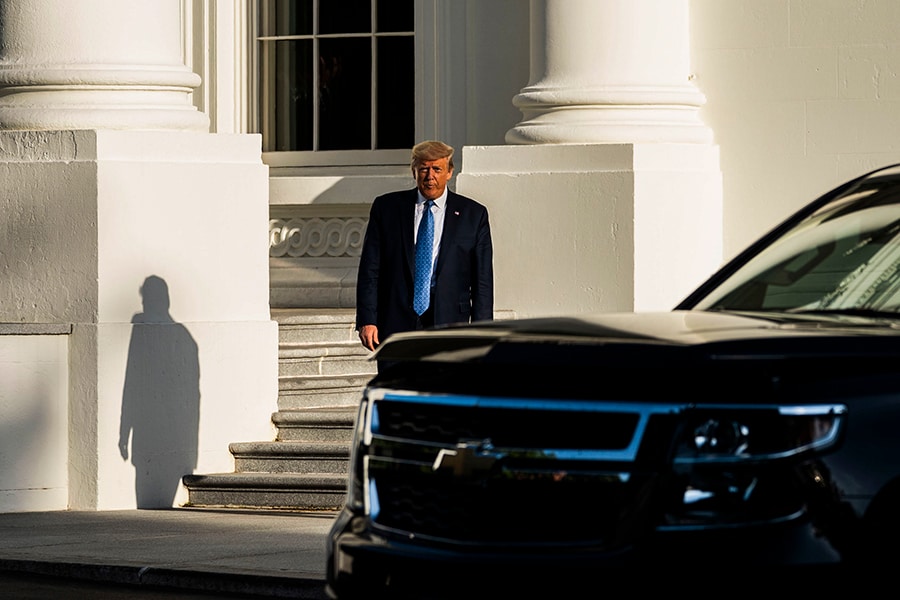
Hey @jack, you should also look at these tweets from @realdonaldtrump
The New York Times analysed the president's Twitter feed for a week. A third of his posts contained falsehoods or murky accusations, underscoring the challenge to Twitter's chief, Jack Dorsey, of policing him
 President Donald Trump at the White House, June 1, 2020. Twitter and its chief executive, Jack Dorsey, placed warnings on three of Trump’s tweets last week, taking a measured but hotly debated step to place some limit on the president’s use of social media to spread falsehoods and incite his followers. (Doug Mills/The New York Times)
President Donald Trump at the White House, June 1, 2020. Twitter and its chief executive, Jack Dorsey, placed warnings on three of Trump’s tweets last week, taking a measured but hotly debated step to place some limit on the president’s use of social media to spread falsehoods and incite his followers. (Doug Mills/The New York Times)
(Fact Check)
Twitter and its chief executive, Jack Dorsey, placed warnings on three of President Donald Trump’s tweets last week, taking a measured but hotly debated step to place some limit on the president’s use of social media to spread falsehoods and incite his followers.
Twitter attached labels refuting two of Trump’s tweets on voter fraud and restricted one that implied that protesters in Minneapolis could be shot. But it left countless others unchallenged, including those baselessly insinuating that Joe Scarborough, the MSNBC host, killed a former staff member.
A New York Times review of the president’s 139 Twitter posts from Sunday, May 24, to Saturday, May 30, found at least 26 contained clearly false claims, including five about mail-in voting that were not flagged, five promoting the false conspiracy theory about Scarborough and three about Twitter itself. Another 24 were misleading, lacked context or traded in innuendo. (This analysis did not include dozens of Trump’s retweets.)
To put it another way, more than a third of the president’s tweets over the course of a week contained dubious information. That presents a challenge both to Twitter and to the millions of people who are exposed to Trump on social media, especially now, with the nation facing the triple challenge of a pandemic, economic dislocation and nationwide protests over systemic racism.
©2019 New York Times News Service




